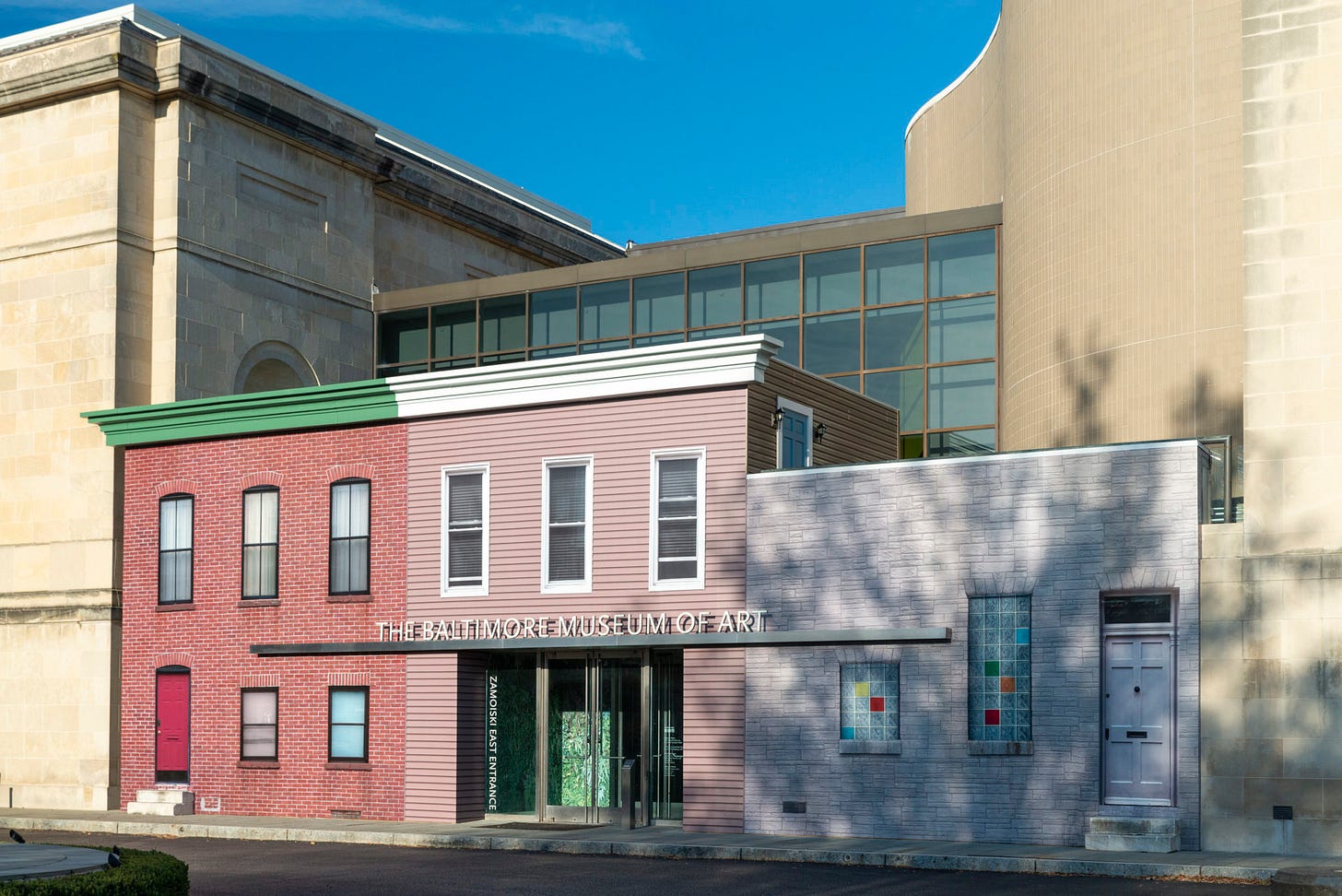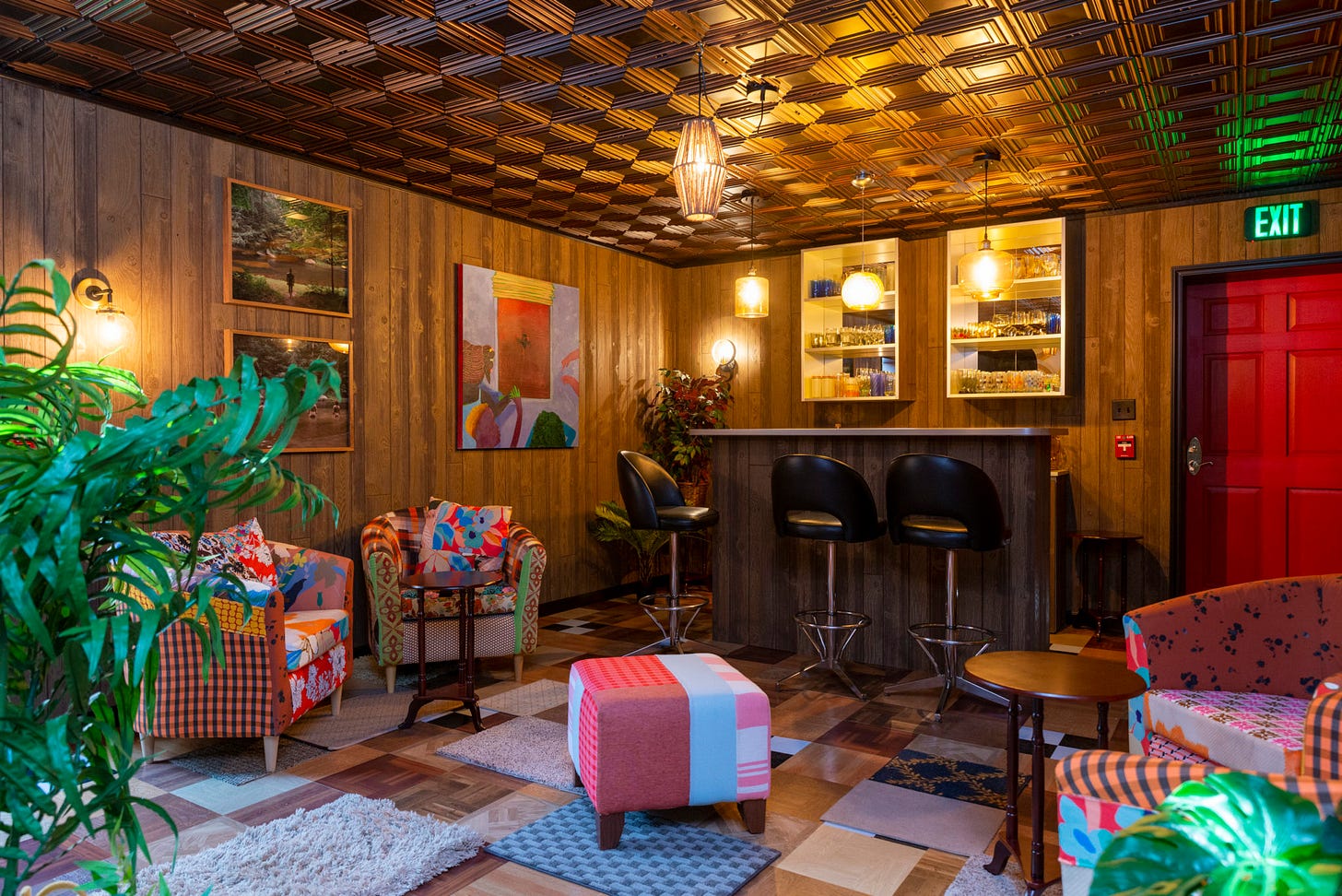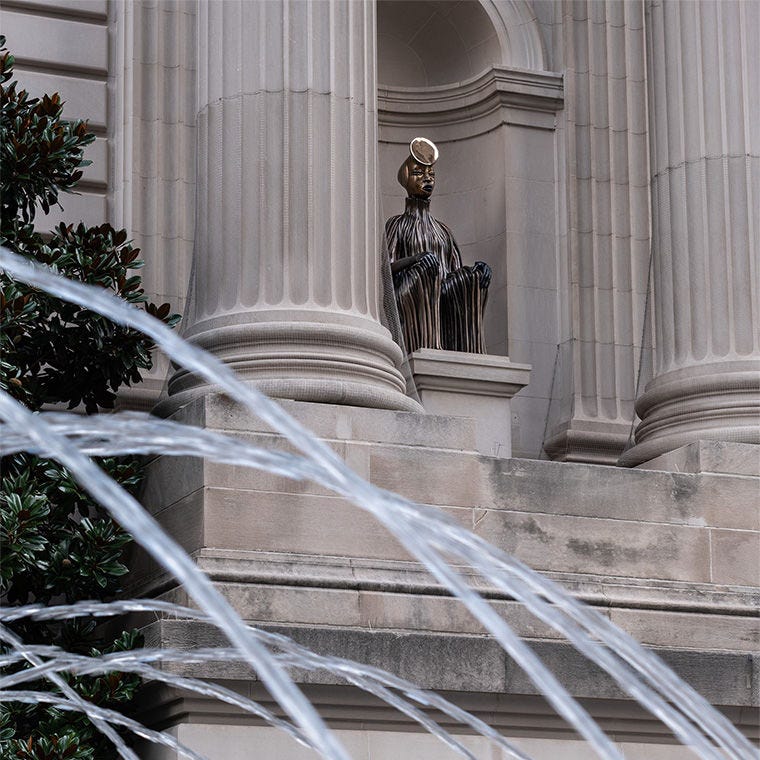There must be a reason that hair is the locus of so much sacred and religious ritual. Hair matter is nothing more than protein filaments stacked between chemicals belying what we’ve eaten or taken into our bodies. Can hair also be a record of what we’ve seen, what we’ve looked at? Can our hair also hold the record of a truly impactful art experience? What would that look like? What habit-forming crystals of culture would show up under that microscopic lens?
This is your hair on art.
Some people report a physical sensation while viewing art: Stendhal Syndrome is the weakening of the knees, the quickening of the heart-rate, the slowing of the breath when in communion with something wholly beautiful: it engages the entire body, it resonates with the entire being of you, beyond you. Beyond aesthetics, Stendhal Syndrome speaks to a certain holiness in the art experience—a rarified glimpse into what may lie ahead, what futures are possible.
Museums have often been referred to as cathedrals to culture. Encyclopedic Art Museums like the Metropolitan Museum of Art (NYC), the Philadelphia Museum of Art (Philadelphia, PA), and the Baltimore Museum of Art (Baltimore, MD) are all designed after the Neoclassical temple: wide stone steps bring you from the plane of the living to the plane of the eternal, tall columns draw the eye upward, toward heaven.
Neoclassical, cathedrals, spaces where light divides between a cavalcade of heaven-inviting windows and the brief spaces between columns mete out a rhythm of shadows that hide the light. They are also spaces that hoard the collections of colonizers. Sir Hans Sloane, an Irish physician and naturalist, amassed the seedling collection of the British Museum in London, UK, when he bequeathed his collection to the “nation” of Great Britain in 1759. The earliest institutional museum spaces were meant to be literal spaces of wonderment: wunderkammers, they were called. The wunderkammer of his original collection of artifacts has been installed roughly intact. Yet which inspires more wonder? The eagerly-taken artifacts with spotty attention to provenance collected on wide-sweeping tours of colonized countries across the African continent and beyond? Or the sheer audacity of these early “explorers,” these privilege-fueled collectors of ancient “curios”?
Where art lives and how it gets there is a principal topic of conversation in my Art History classrooms. What is it about a museum or a gallery space that can achieve that rarified air of wonder? What is it about certain art that makes us go weak in the knees, transcend from one plane to another, become transported? And when is pure wonderment a distraction from grounding information, a ruse?
There are many examples of radical interventions of museum facades where they are made to better reflect either the nature and culture of the collections within, or to better mirror the communities that the museum itself is situated within. Two in particular come to mind.

Mickalene Thomas’ re-design of the visitor entrance of the Baltimore Museum of Art, A Moment’s Pleasure, which remained installed from 2019-2021, is a perfect example of this reclamation. According to the American Alliance of Museums core statutes: a museum must hold its collections “in the public trust.” It must vow to serve its local communities first, and it must place education at the center of its mission. There has been a move away from collection development and toward community engagement in these historic spaces. The expansion of the visitor entrance alone is yet another example of the museum’s investment in visitor comfort and welcoming—most visitors enter here at the side entrance, and the wide stone steps of the museum’s original Neoclassical facade are often forgotten.
For Mickalene Thomas’ intervention, she re-imagined the visitor entrance to the museum as a Baltimore City block of rowhouses. Entering the museum during this installation felt like skipping up the stoop steps of a characteristic rowhome, and throwing open the door into someone’s living room. She also transformed the lobby of the visitor entrance to reflect the textures and patterns she might have encountered in the warm interior spaces of homes she remembers visiting as a child growing up in Black neighborhoods in New Jersey.

The second, of course, is the Metropolitain Museum of Art facade commission of Wangechi Mutu’s four bronze caryatids.

From September 2019-November 2020, the artist Wangechi Mutu was commissioned to install four bronze sculptures in the ever-empty architectural niches of the facade of the Metropolitan Museum of Art. The Series was aptly called “The NewOnes, will free Us.” Individually, the sculptures were titled “The Seated I, II, III, and IV” (2019, cast and patinated bronze). In Wangechi Mutu’s work, these rooted sentinels are mythic protectors, interlocutors between the living and the divine.
The artist had been looking at caryatids, a Classical convention of column design that fashions a traditional column into a sculpted femme figure. Some of the most famous caryatids are on the porch of the Erechtheion at the Acropolis in Athens, Greece. Marble carved women holding up the mantle of the porch’s frieze: evocative of women’s labor, what women carry. In Mutu’s re-imagination of the form of the caryatid, she envisioned a world where women are freed from the burden of bearing the weight: her figures exist separated from the institution, and with the freedom of movement.
Coiled forms which she describes as “fleshy” wrap and fall around the figures’ bodies like armor. One could argue they resemble large coils of protective hair. Mutu also uses actual hair extensions in her multi-media sculptures.
Wangechu Mutu currently has a solo exhibition at the New Museum of Contemporary Art in New York City: Wangechi Mutu: Intertwined. If you’re a NY-dwelling babe, I highly recommend you go and check it out. In this exhibition, the full breadth of Mutu’s work is on display, from her monumental Sentinel sculptures to her large and small scale mixed-media collaged paintings.
The Sentinel series, which is currently on view on the third floor of The New Museum retrospective, features figures adorned with hair. In these sculptures, the hair combines with natural elements of soil, wood, and carved clay, to create a clashing sensation of the organic with the divine. Hair as rooted and distinctly human falls evocatively from the monumental figures, which are arranged in gendered poses meant to evoke the “feminine” divine. In these sentinels, we find hair draped from the head, along the arm, and sprouting from between their massive, strong legs.

Wangechi Mutu’s work is often discussed in the context of Afrofuturism, a term invented in the 1970s and popularized by artists like Sun Ra. Afrofuturism imagines a liberated world where African-rooted aesthetics, spiritualisms, and culture becomes the dominant culture over the westernized, white-washed colonizer aesthetic that dominates today.
Mutu splits her time between studios in New York City and Nairobi. In an Art21 video about her studio practice, Wangechi Mutu talks about wanting to honor the divine feminine, unravel the hypocrisy of worshiping women for life-bearing while denigrating women for life-having. When she’s not working in cast bronze, she is conjuring forms from the very soil of her home country of Kenya, bringing the energy of that grit to her pieces, which travel far beyond their native lands to stand in the voided-out spaces of white cube galleries.
Wangechi Mutu’s Waterwoman (2017, cast in bronze 2018) graced the flex gallery in the European wing of the Baltimore Museum of Art for several years after the museum acquired it in 2018. As with all her sculptures, this figure felt immediately planted, rooted to its spot, like it grew up naturally there: a coiled and elegant mermaid—mami wata—figure, seated on one hip, her tail curving around, her torso upright and strong: all in black, patinated bronze. Her body leans long on her elegant arms thrown back behind her, torso serpentine but not like contrapposto. Non-western like Akhenaten, round-bellied, kingly in his way that said: family. When Waterwoman left, was removed from the gallery to live elsewhere, I remember feeling dazed, a distant longing. In that moment, I was a hapless sailor falling into her energy vortex.
Mami Wata are mermaid figures of African folklore that are venerated in some form from West to East Africa, thought to have originated in Nigeria, that now make appearances across the United States and in many other communities in the Caribbean and across South and Central America where the African Diaspora has rooted. Sometimes called La Sirene, mami wata are most often shown with attributes of the mirror, a comb, and a watch. Many legend, myth and folktale feature the mami wata as a figure both terrible and beautiful, who might kidnap her followers and return them to earth changed, mainly into more charming and attractive individuals, that is as long as they remain faithful to her alone.
In HAIR CLUB, we consider mermaids to be hair tropes figures of widespread and mythic proportions. In the western world, mermaids and sirens used to share an equal and fierce intelligence. In illuminated manuscripts they would be presented as they were: half woman, half fish or half woman, half bird with attributes (small identifying artifacts in visual culture) of books and spyglasses representing wisdom and sight or vision. With the spread of Christianity and its moralisms, we begin to see a shift away from the apparent far-sighted wisdom of mermaids and more towards a narrative of seduction and vanity. Books and spyglasses were replaced by mirrors and combs. Michal Lynn is our resident mermaid scholar. She draws our attention to the bitchy, self-involved mermaids of Disney’s Peter Pan (1953), checking their reflections in tiny shell-shaped mirrors. Flattering, eyelash-batting, judgmental, vain. A preoccupation with hair.
Wangechi Mutu’s Waterwoman defies all the western brainwashing of the desire to frame mermaids in the pose of frail vanity. She is unbothered, strong. A goddess, her magic coiled around her, sometimes literally personified as a snake. Her confidence isn’t borrowed or jealously guarded. She is allowed to be as she is.






